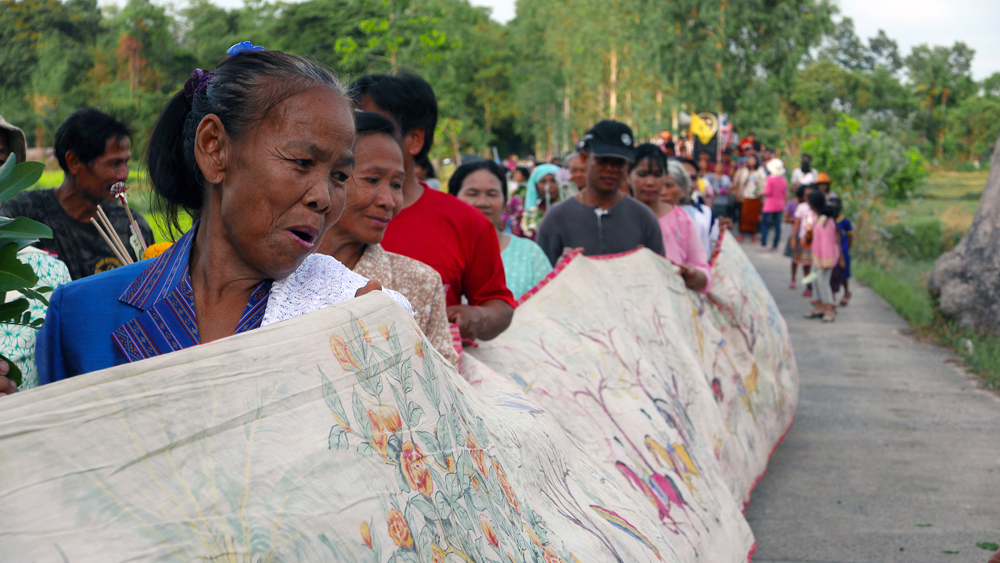Legend of Prince Vessantara Told on 50 Meters of Cloth
Epic material: Telling the story of Prince Vessantara, the longest cotton scroll paintings stretch to about 100 meters. The "Vessantara cloths," which were drawn freehand in early times, lend the extremely popular Buddhist legend a visual expression. The Ethnographic Museum at the University of Zurich is showing four such painted scrolls at its new exhibition: "DEVOTION. Image, Recitation, and Celebration of the Vessantara Epic in Northeast Thailand."
The prince gives away his family
The largest scroll in the exhibition unfolds to visitors to 50 meters along three walls. Divided into thirteen episodes, the one-meter-wide scroll tells the story of Prince Vessantara. The so-called Vessantara Jātaka is about the life and deeds of the prince. It is the tale of the pre-incarnation of the Buddha, Siddhārtha Gautama. In that existence as Prince Vessantara, he had to prove the last and most important virtue in order to become the Buddha or the Enlightened One: He had to renounce everything near and dear to him. At a dramatic turning point of the epic, the prince even gave away his two children and his wife Maddī.
Carrying the scroll paintings brings good luck
Year after year, the ancient story of Prince Vessantara is interpreted at religious folk festivals – such as "Bun Phra Wet," a celebration of the "Religious Merits of Prince Vessantara," which takes place in Northeast Thailand and Laos. The painted scrolls are carried through the village and hung inside the temple at the end of the procession. "Carrying the scroll brings good luck," curator Thomas Kaiser explains. He visited the festivities in Thailand and recorded the sonorous voices of the monks, who recited the Vessantara epic. Visitors can hear the collective recitations in the exhibition and follow the events on video.
Experiencing the Vessantara epic with all senses
Based on a legend, people go to the "Bun Phra Wet" festival to listen to a complete recitation of the Vessantara Jātaka and celebrate the event with a thousand lights, a thousand lotus blossoms, a thousand blue waterlilies, and a thousand umbrellas, pennants and banners. In Northeast Thailand, these elements are called the "hundred things and thousand things" that are collected, created and set up for the festival. "The village temple in Northeast Thailand changes into colorful, melodic space for the festival," Thomas Kaiser says. With its new exhibition, the Ethnographic Museum at the University of Zurich also creates such a space: "With the objects, images, texts and sounds of the exhibition, we invite the visitors to experience the history of Prince Vessantara with all their senses," Thomas Kaiser concludes.
